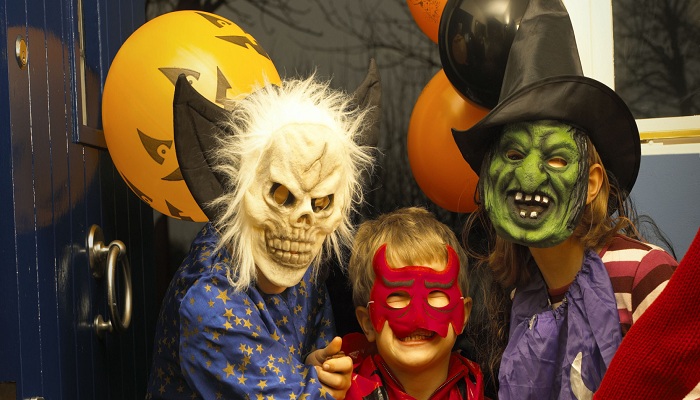
Halloween or Hallowe’en (a contraction of All Hallows’ Evening), also known as Allhalloween, All Hallows’ Eve, or All Saints’ Eve, is a spooky celebration observed every year in a number of countries on October 31 – the eve of the Western Christian feast of All Hallows’ Day, also known as All Saints’ Day. In 2017, Halloween falls on a Tuesday.
On Halloween night costumed ghosts and goblins will knock on doors across the U.S., asking for a treat with the threat of a trick as part of the deal.
Ever wondered why we say “trick or treat?” at Halloween. It turns out the practice draws from a range of traditions.
According to History.com, Halloween traces its roots to the pre-Christian Celtic festival of Samhain, which was celebrated on the night of Oct. 31. The ancient Celts believed the dead returned to earth on Samhain and would celebrate with bonfires and other practices to honor the deceased. Some celebrations involved people dressing up in costumes, often choosing ghosts and demons to act out the parts.
The early Christian church wasn’t a fan of the pagan celebration and looked to replace it with its own event, designating Nov. 1 as All Hallows Day or All Saints Day, a time to honor Catholic Saints. The day was celebrated in much the same way, however, with bonfires and masquerades. People would also visit neighbors and receive “treats” in exchange for praying for the souls of their loved ones. In return, the visitors would often tell a joke or perform an act as a “trick.”
Halloween facts

Here are some Halloween facts from the U.S. Census Bureau:
There will be an estimated 41.1 million trick-or-treaters – children ages 5 to 14 – hitting the streets tonight in search of treats.
Some of the best places to spend Halloween: Tombstone, Arizona; Scarville, Iowa; Transylvania County, North Carolina; Yellville, Arkansas; Slaughter Beach, Delaware; and Kill Devil Hills, North Carolina.
39,815 – The number of people employed by U.S. manufacturing establishments that produced chocolate and cocoa products in 2015. This industry’s value of shipments totaled $17.2 billion, up from $16.0 billion in 2014.
$12.4 million – The value of U.S. imports of pumpkins in 2016. Pumpkin carving and decorating is a popular Halloween tradition.
$1 billion – The estimated amount people will spend children’s Halloween costumes this year.
35 million – The number of pounds of candy corn produced each year.
History behind Halloween

The origin of the festival is disputed, and there are both pagan and Christian practices that have evolved into what Halloween is like today.
Some believe it originates from the Celtic pagan festival of Samhain, meaning ‘Summer’s End’ which celebrated the end of harvest season.
Gaels believed that it was a time when the walls between our world and the next became thin and porous, allowing spirits to pass through, come back to life on the day and damage their crops. Places were set at the dinner table to appease and welcome the spirits. Gaels would also offer food and drink, and light bonfires to ward off the evil spirits.
The origins of trick or treating and dressing up were in the 16th century in Ireland, Scotland and Wales where people went door-to-door in costume asking for food in exchange for a poem or song. Many dressed up as souls of the dead and were understood to be protecting themselves from the spirits by impersonating them. More about that below.
The Christian origin of the holiday is that it falls on the days before the feast of All Hallows, which was set in the eighth century to attempt to stamp out pagan celebrations. Christians would honour saints and pray for souls who have not yet reached heaven.

Post Your Comments